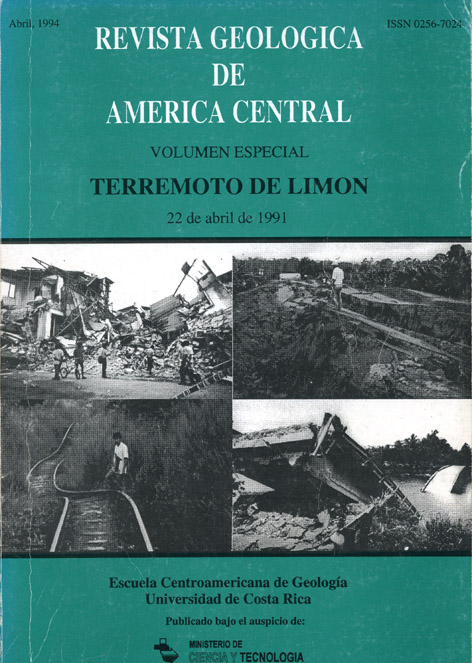Abstract
The April 22, 1991 Limón earthquake, as others in recent history in Costa Rica, has triggered extensive landslides. Their most important concentration occured in the viccinity of the epicentral area, on steep slopes covered with residual-regolithic soils originated from Tertiary sedimentary and intrusive rocks. An excentrical distribution of the most important landslide areas in relation lo the epicenter is observed. This is probably due to the tectonic setting, rupture propagation, wave directivity and geomorphic conditions of the region. Areas affected with landslides coincide with those with higher values of the Relative Relief Index. Concentration of local faults and amplification of seismic vibrations on high and steep mountains also contributed to increase landslide coverages. Most landslides could be classified as regolithic flows and rock falls although rock-earth slumps and slump-earth flows also occured. Considering that almost 2000 km2 were affected, most of which orginally covered by tropical rainforest, this event caused a major environmental disaster from which it will take several decades to recover. By using available data, this event has been compared with others in Costa Rica since 1888. Correlations between magnitudes, intensities and epicentral distances show that local reliefs are responsible for the magnification of landslide coverages.Comments
Downloads
Download data is not yet available.






